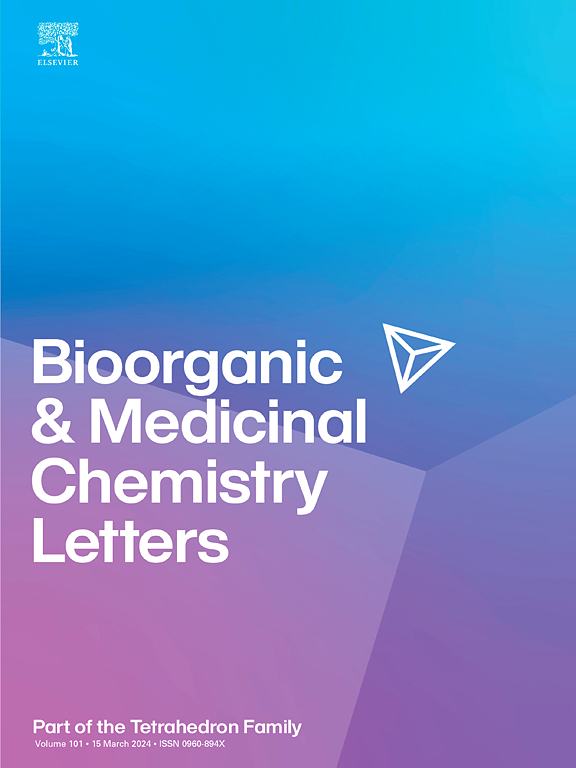Synthesis of quinazoline derivatives and their in vitro inhibition activity against MDA-MB-231 cells and A549 cells
IF 2.2
4区 医学
Q3 CHEMISTRY, MEDICINAL
引用次数: 0
Abstract
A series of novel 4-aniline quinazoline derivatives (Y1-Y26) were synthesised from 2-amino-6-nitrobenzoic acid based on the quinazoline parent nucleus via trifluoroacetylation, ring-closing and chlorination; The CCK-8 method was used to assess the in vitro inhibitory activities of the resulting compounds against two distinct cell lines: breast cancer cells (MDA-MB-231) and non-small cell lung cancer (A549). The results demonstrated that most of the compounds exhibited in vitro proliferation inhibitory activity against both MDA-MB-231 and A549 cells. Among these, compound Y22 exhibited the strongest inhibitory effect on MDA-MB-231 cells (IC50 = 4.53 μM); As the concentration of Y22 increased, the inhibition of cell proliferation was enhanced, and the cells gradually shrank and underwent morphological changes consistent with apoptosis; Transwell assay demonstrated that the compound Y22 exhibited a substantial inhibitory effect on cell migration; Flow cytometry revealed a substantial augmentation in apoptosis with elevated compound concentrations; Western blot analysis indicated that Y22 may exert in vitro antitumour activity by decreasing the expression of the anti-apoptotic protein Bcl-2 while increasing the expression of the pro-apoptotic protein Bax. The findings of these studies suggest that Y22 can potentially plays a significant role in the design and synthesis of antitumour drugs.

喹唑啉衍生物的合成及其对MDA-MB-231细胞和A549细胞的体外抑制活性。
以喹唑啉为母核,以2-氨基-6-硝基苯甲酸为原料,经三氟乙酰化、合环和氯化反应合成了一系列新的4-苯胺类喹唑啉衍生物(Y1-Y26);采用CCK-8法评估所得化合物对两种不同细胞系的体外抑制活性:乳腺癌细胞(MDA-MB-231)和非小细胞肺癌(A549)。结果表明,大部分化合物对MDA-MB-231和A549细胞均有体外增殖抑制作用。其中,化合物Y22对MDA-MB-231细胞的抑制作用最强(IC50 = 4.53 μM);随着Y22浓度的升高,对细胞增殖的抑制作用增强,细胞逐渐萎缩,并发生与凋亡相一致的形态变化;Transwell实验表明,化合物Y22对细胞迁移具有明显的抑制作用;流式细胞术显示,随着化合物浓度的升高,细胞凋亡显著增加;Western blot分析表明,Y22可能通过降低抗凋亡蛋白Bcl-2的表达,增加促凋亡蛋白Bax的表达来发挥体外抗肿瘤活性。这些研究结果表明,Y22可能在抗肿瘤药物的设计和合成中发挥重要作用。
本文章由计算机程序翻译,如有差异,请以英文原文为准。
求助全文
约1分钟内获得全文
求助全文
来源期刊
CiteScore
5.70
自引率
3.70%
发文量
463
审稿时长
27 days
期刊介绍:
Bioorganic & Medicinal Chemistry Letters presents preliminary experimental or theoretical research results of outstanding significance and timeliness on all aspects of science at the interface of chemistry and biology and on major advances in drug design and development. The journal publishes articles in the form of communications reporting experimental or theoretical results of special interest, and strives to provide maximum dissemination to a large, international audience.

 求助内容:
求助内容: 应助结果提醒方式:
应助结果提醒方式:


